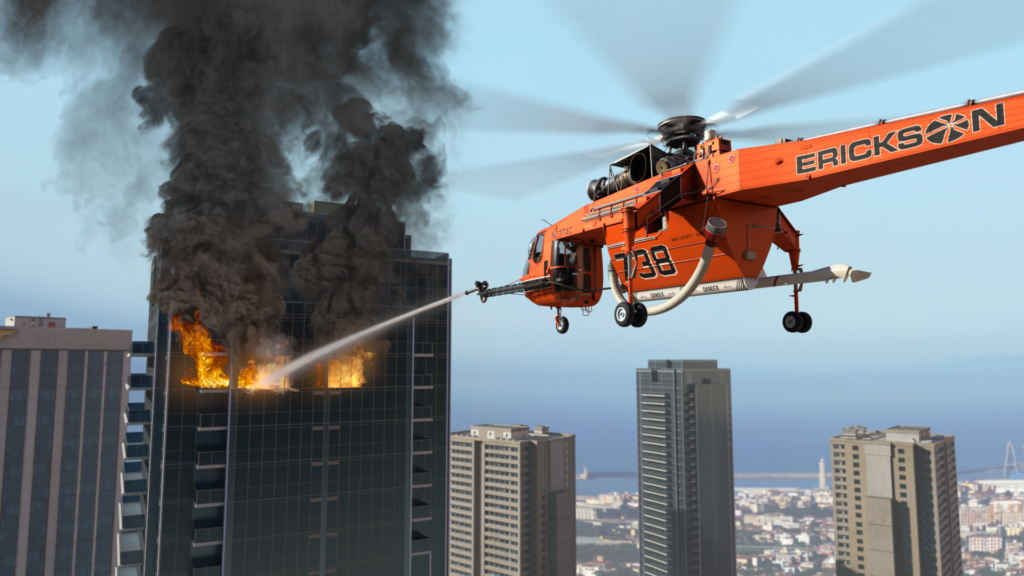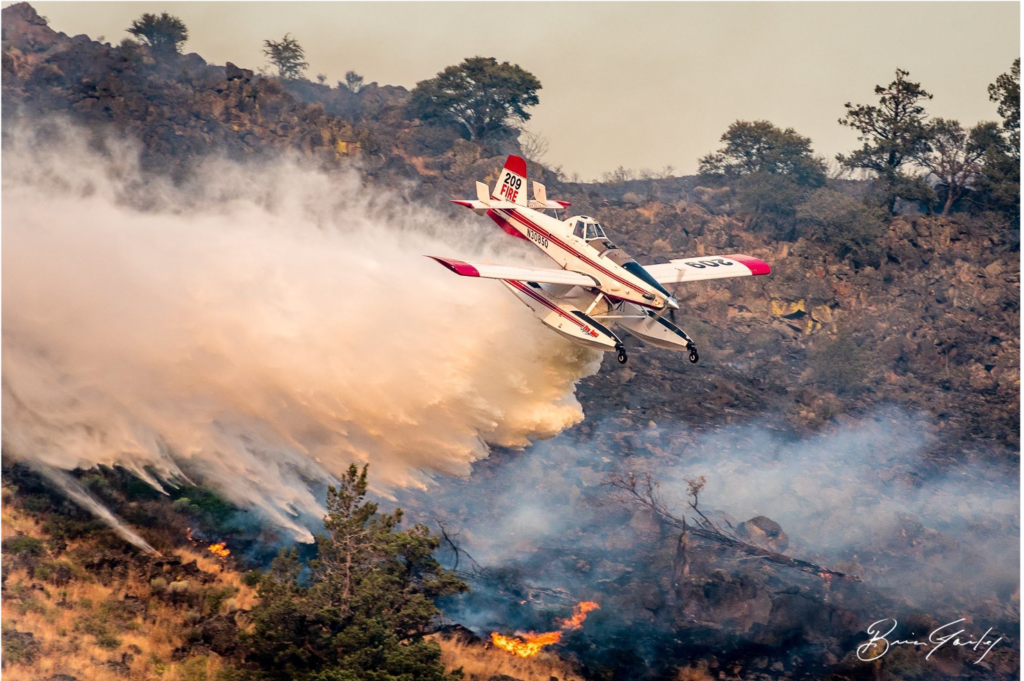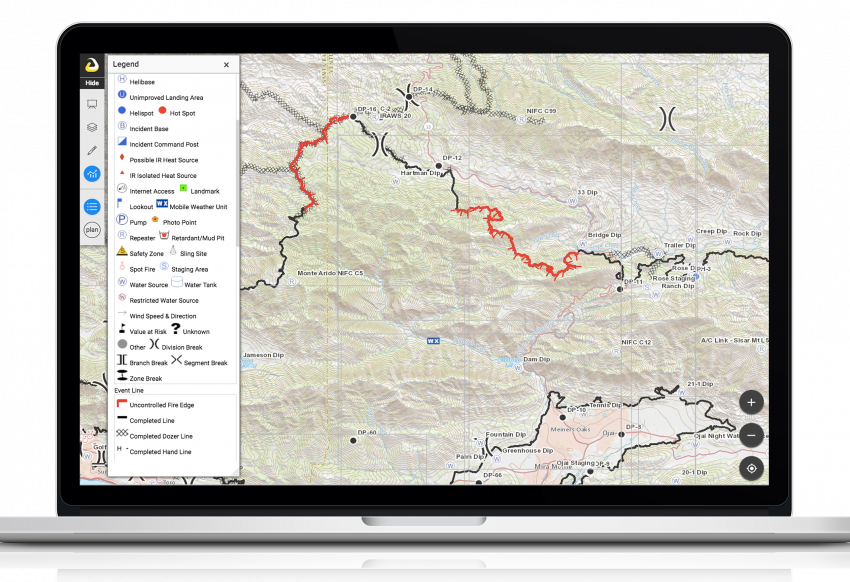Will emerging trends in aerial firefighting help mitigate longer, more intense fire seasons?
By Christina Kalman
2021 is an unprecedented year, with global wildfires starting earlier and lasting longer. In Greece, for example, the fire season started more than a month ahead of average in May. Most hope this is not a trend and more of an anomaly, but expert sources report that drier and hotter conditions worldwide indicate persistence.
AirMed&Rescue, a trade publication, recently held a roundtable panel to learn more about new aerial firefighting technologies that can battle these devastating trends. Experts in the aerial firefighting world, including Erickson, Inc., Dauntless Air, and geographic surveillance software maker, Intterra, indicate a need for rapid assimilation of innovative technologies. Jeff Baxter, Senior Director of Research and Development for Erickson, Inc., said that if fire agencies are always looking for the lowest bidder approach to fire solutions, “it will stifle our ability to add technology.” It seems that the dreams of new satellite systems, nighttime firefighting, and other newer aircraft systems are no longer nice to have but now necessary based upon a rapidly changing environment.
What technologies are coming to market, and will they solve the problem of longer fire seasons?

Improved flight efficiency
Composite Blades: Aircraft that can fly farther and longer is a modern attribute that can help with firefighting. After years of planning and development, Erickson, Inc. created new helicopter blades for the S-64 Air Crane® helicopter, called Composite Main Rotor Blades (CMRB). The new blades allow the aircraft to fly in high and hot conditions with improved lift and time on a flight. Roll-out of the blades is occurring now.
Upgraded Engines: Both Dauntless Air, with their Fire Boss aircraft, and Erickson, with the S-64 Air Crane® helicopter, are improving engines through fly-by-wire technology and better data connections between pilot and base. Improvements to the engines will allow for better logistical planning, which can be a time-saver.
Sikorsky MATRIX™ Technology: Erickson will integrate Sikorsky’s MATRIX™ hardware and software kit, with the firefighting capabilities of the Erickson S-64 Air Crane® helicopter to improve safety and performance. With next-generation flight controls and navigation systems powered by MATRIX™, Erickson will enhance cockpit awareness and flight crew safety during day and night operations.
Safety Standards: Dauntless Air’s CEO, Brett L’Esperance, cited the need to maintain quality safety standards for pilots, crew, and those in the line of fire. Both Dauntless and Erickson focus on safety in their operations, from maintenance to scooping and dropping water, safety is a top priority at both companies. This is something that will continue to improve.
Improved firefighting ability
Gel Blending: The AT-802F by Dauntless Air, has the capacity for “Onboard foam and gel mixing systems; ability to ground-load retardant, gel, and water, if required,” according to their website, dauntlessair.com/our-fleet. This technology can save time because the aircraft can take off and return to the fire sooner.
Cannons: Erickson developed water cannons, which now have a prototype in testing Q4 2021, that allow for water in the 2,650-gallon holding tank to be sprayed directly on structures like high rises.
Gallons Per Hour (GPH): Dauntless Air can drop 13,000 gallons per hour on fires. Their website states that because most wildfires are near residential areas, there are usually water sources within 10 miles. The S-64 Air Crane® helicopter can pick up 2,500 gallons of water at a time and can scoop from shallow water sources within 60 seconds.

Improved surveillance and getting to the fire faster through heads-up displays
Surveillance Data: Aircraft data collection is massive. There is data coming from NASA, and NOAA, and other governmental entities. And Brian Collins, CEO of Intterra, said, “Let’s keep pushing the envelope of feeding information to the aircraft.” Collins’ company crunches the data into a geographic and relevant resource for firefighters.
Software: The newest wave of technology will be to integrate the software onto the flight deck. Using heads-up displays and mapping screens to pinpoint where a new fire has started will be vital in stopping the fire before it gets out of hand.
Dauntless Air’s Surface Alert System: This technology on the Fire Boss tells the pilot the height above the surface of a body of water. It audibly announces the aircraft’s proximity to water, which allows the pilot to know the depth and location for scooping water. It counts down from 50 feet to 30 feet and onward down to five feet or at contact. The alert eliminates unnecessary fly-bys that miss the water or only allow for a partial scoop.
Infrared Screens: Infrared heads-up display (HUDs), according to L’Esperance, is a wing or fuselage mounted camera that detects fires faster with infrared detection.
Engine Monitoring Technology: Back to data, both Erickson and Dauntless are working on improving the collection of data from the engine, which impacts improved maintenance and flight performance.

Improved communication and purchasing between departments
Communication: Baxter said there generally is effective communication between different fire agencies, and they are willing to share information and best practices.
Purchasing of New Fire Equipment: However, regarding purchasing aircraft and allocations for new fire equipment, all three companies indicated that there is no communication. They said that each fire agency manages its budget and purchasing, resulting in miscommunication about what and when to spend on new aircraft.
In summary
The aerial firefighting technologies of today are boundless. Aircraft technology is advancing faster than at any time in history; parallel to the rapid integration of technology in everyday life, aircraft technology is changing. However, adopting these technologies in this industry is contingent on fire agency investment. A participant in the panel said, “In Washington D.C., the Congress needs to understand that funding more aircraft, especially in the West, a fire-prone area is important. Congress does not “see” the issues that we see with smoke-filled skies. The air quality index is challenged increasingly at unhealthy levels. Fire is a national security threat, we don’t need to militarize it, but people are losing homes and properties because there aren’t enough to fight fires.” With suitable investments, there is a chance for improvement in a worsening fire climate.
To listen to this AirMed&Rescue recorded panel discussion broadcast, please click here. Contact us with any questions or for more information about Erickson’s solutions.

